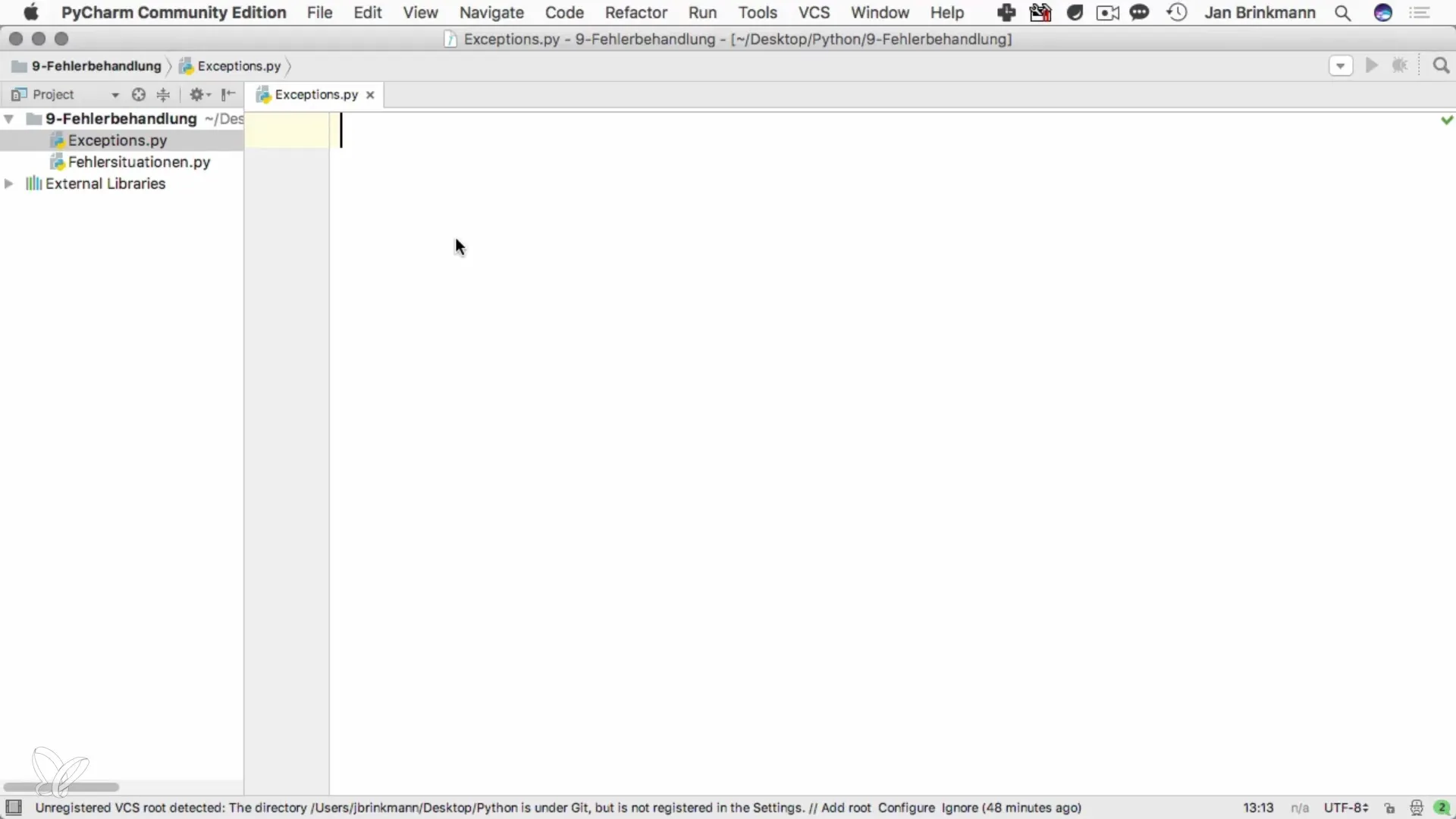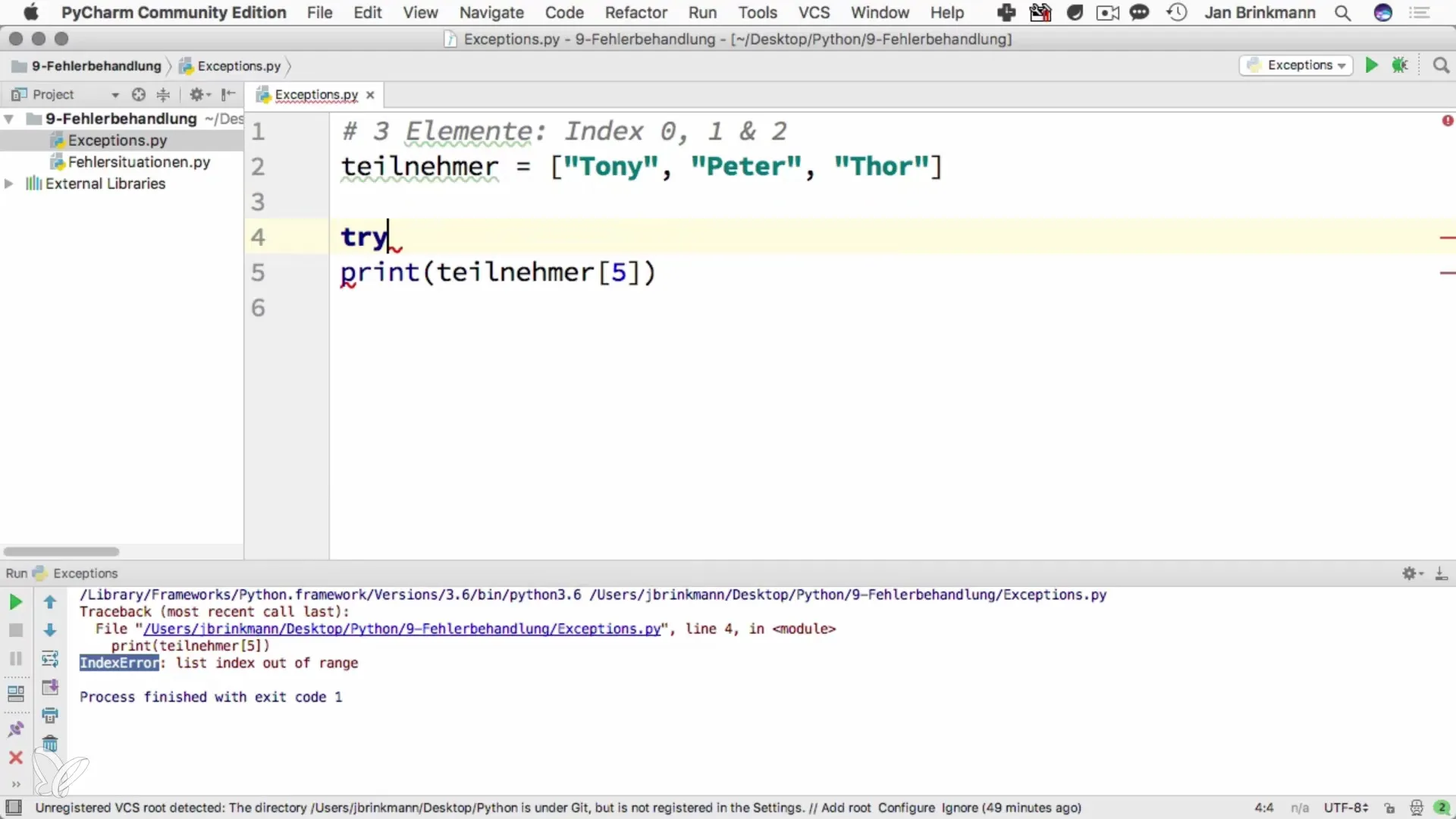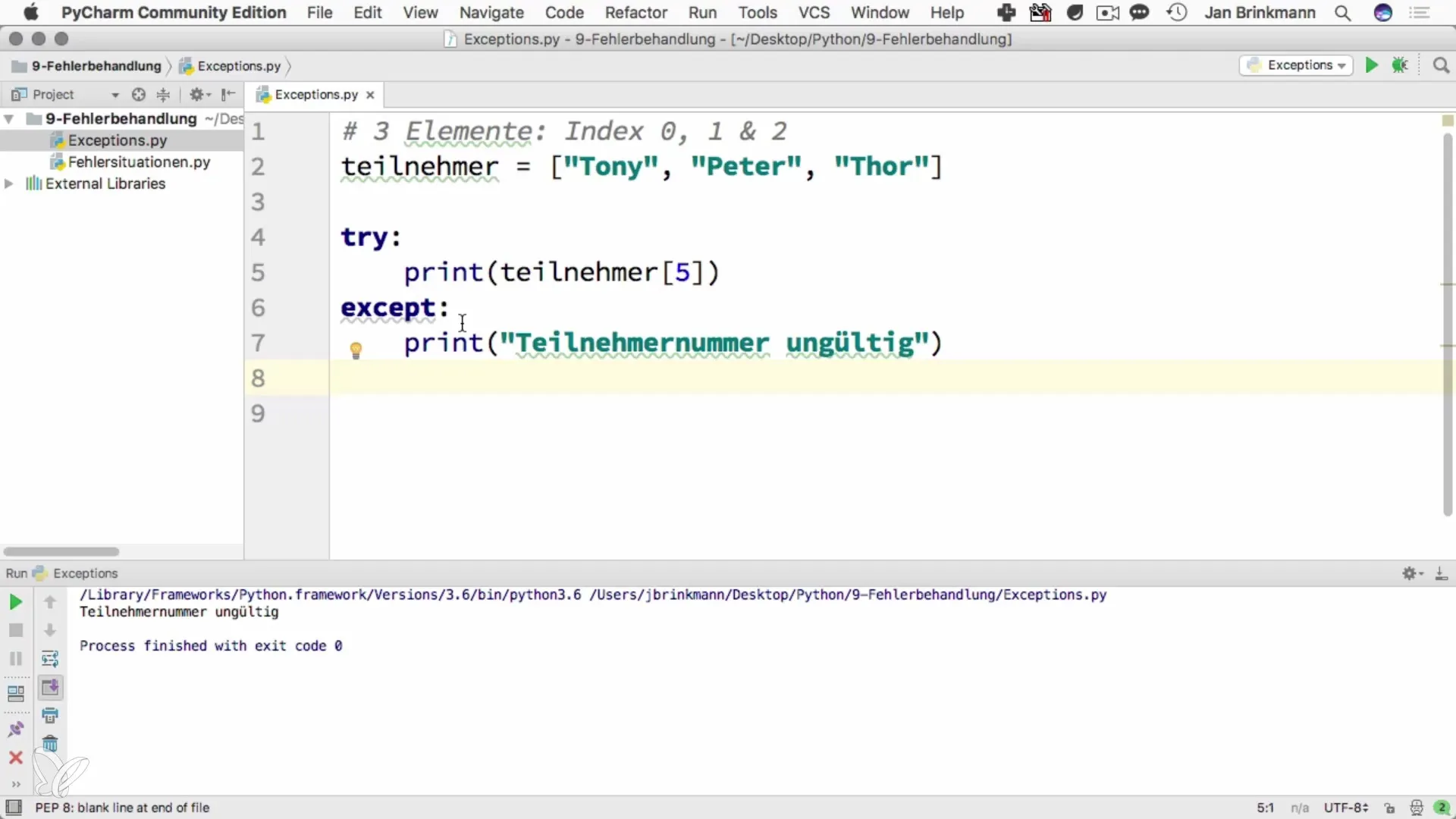Errors are inevitable when programming. That's why it's important to know how to handle them. In Python, errors are represented as Exceptions, and managing these exceptions is crucial for the stability of your applications. In this tutorial, you'll learn how to effectively catch and handle errors using try and except blocks.
Key Insights
- Errors in Python are represented by exceptions.
- With try and except, you can detect and handle errors.
- Error handling makes your programs more robust and user-friendly.
Step-by-Step Guide
First, you'll look at a practical example to understand how to work with exceptions. Let's say you have a list of participants, such as superheroes. These participants are stored as elements in a list.
When working with lists in Python, it's important to know that indices start at 0. So if you have three elements in your list, the valid indices are 0, 1, and 2. Accessing an index outside this range will lead to an error.

Now, let's turn to a practical example. Suppose you're trying to access the participant with index 5. Since the list only contains three elements, this will cause an error.
When you run this code, you'll find that it doesn't work. Python will return an error message stating that the index is out of range.
This error will be displayed as an IndexError. It's extremely important that you do not ignore such errors, but instead catch them and respond appropriately. In many applications, the user won't know why something didn't work – that's why you should inform them about the error.
To handle this error, you can use try and except. Here's how it works: You wrap the critical section of your code in a try block.

In this block, you try the code that could potentially cause an error. If the code doesn't work as planned, control is automatically passed to the except block. Here, you can display an appropriate error message to the user.
When you run the above code, you will no longer see a hard error message. Instead, your program will inform you that the specified participant number is invalid.

And if you want the user to know which valid positions are available, you can also display that information. This will make your program even more user-friendly.
If you run your code now, the user will have a clear understanding of what went wrong and what options they have.
It's also important to be aware that there are other nuances in error handling that you will explore in the future. Depending on the complexity of your application, you may need to handle additional reasons for exceptions, use multiple except blocks, or even include a finally block to execute code regardless of whether an error occurred or not.
Summary – Handling Errors as Exceptions in Python
You have learned how to handle errors in Python that are represented as exceptions. By using try and except, you can ensure that your code becomes more robust and provides clear feedback to the user when an error occurs. This not only improves the quality of your code but also makes the user experience much more pleasant.
Frequently Asked Questions
What are exceptions in Python?Exceptions are error states that occur during the execution of a program and can be managed using special blocks like try and except.
How does the try block work?A try block encloses the code that might potentially cause an error. If an error occurs in the try block, control is passed to the except block.
What is an IndexError?An IndexError occurs when trying to access an element of a list whose index is outside the valid range.
Can I use multiple except blocks?Yes, you can use multiple except blocks to handle different types of errors individually.
How can I inform the user about errors?You can do this using print statements in the except block to inform them what went wrong.


